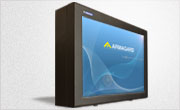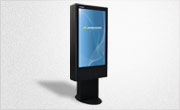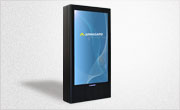Temperature Limits of LCD Displays
Posted by: Richard Williams | Posted on: | 0 Comments
Modern LCD screens have a great many uses. Not only are they now the system of choice for our home TVs and computers but their use in digital signage has made them a common sight in many shopping malls, airports and other locations with high quantities of people.
Even outdoor locations are no barrier to the use of modern LCD screens with outdoor digital signage a rising medium now seen in many town centers, car parks, front of stores and train station platforms.
All this out of home use means many screens operate in locations test the temperature limits of LCD displays. While waterproof screens and LCD enclosures designed for rugged applications provide the ability of the screen to operate-even in outdoor locations, one consideration often overlooked, is that of temperature.
LCD screens have a limited temperature range. Not only will the electronics inside an TV screen overheat and cause failure if the screen gets too hot, but the liquid crystal itself will begin to deteriorate under hot conditions.
The same is true of environments where temperatures fall below zero, causing a screen to stop functioning. A typical LCD TV has an operating range between 0°C (32°F) and 32°C (90°F).
Of course, many indoor and outdoor locations don’t suffer temperatures outside of this range, but many locations do and placing screens in these areas can prove challenging.
Heat
One of the problems with using a screen in hot locations is that the screen itself produces quite a bit of heat. When housed in an outdoor enclosure, the heat has to be continuously removed. While cooling fans combined with an air-vent normally carry out this task on an LCD, the need to prevent moisture from getting to the screen makes the task more complicated.
To get around this problem, specially shaped vents provide an exit for hot air while preventing rainfall and other moisture from getting in. In some locations where ambient temperatures are extremely high, screens need air conditioning to ensure they don’t exceed the maximum operating temperature.
Cold
In cold climates the opposite problem occurs. The need to keep heat in often requires insulation of the screen enclosure. Often this can trap enough of the heat generated by the screen itself to keep the internal temperature above minimum, but in some locations, even this isn’t enough. Heaters, controlled by thermostats provide extra heat in these circumstances, which enables the use of LCD displays in extremely cold locations such as ski-resorts and in Arctic regions.
Post shortlink:
Popular Products
LCD Enclosure
Need armor for your LCD/LED screen(s)? Outdoors or inside the versatile LCD enclosure protects against thieves, vandals & the weather. Installation idea: NFL stadiums.
Outdoor Digital Signage
Exclusive 46” outdoor screen protection. Dubbed the ‘Totem’, due to its distinct design, it repels damage threats, but attracts audiences. Installation idea: Drive-thru restaurants.
Portrait Flat Panel Enclosure
Safeguard your eye-level advertising display screen(s), indoors or outdoors. Completely customizable, add exciting features like touch screen technology. Installation idea: Restaurant frontages.
Indoor Digital Signage
Popular purchase for retail outlets! Great for ‘point of sale’ persuasion, boost your brand with static & motion advertising from a single unit! Installation idea: Mall of America.




